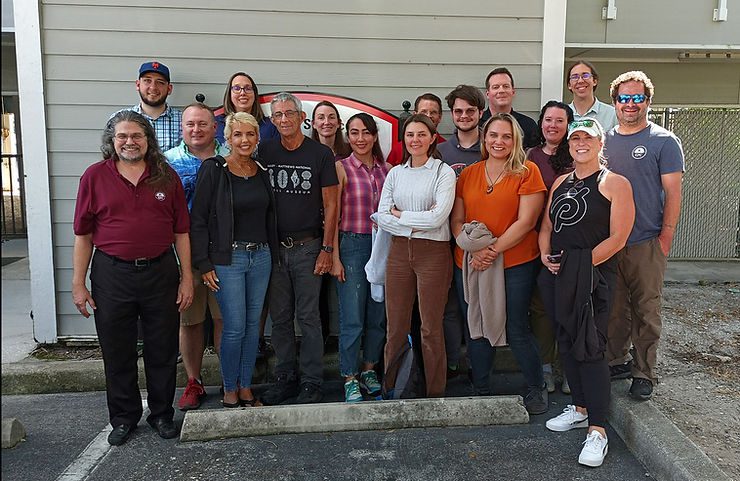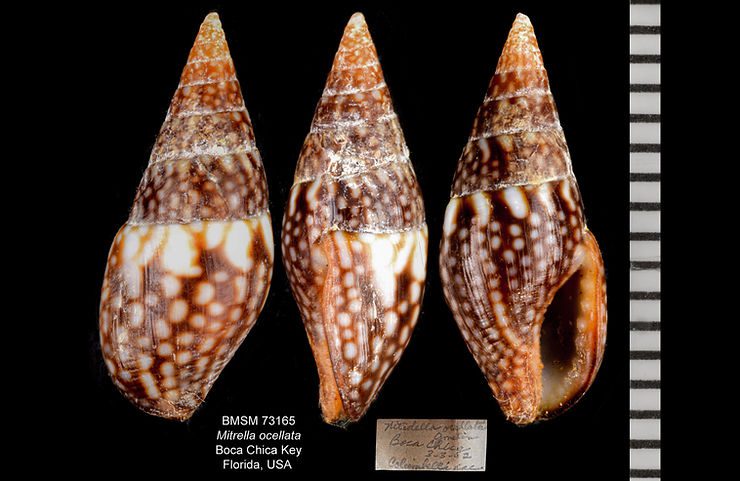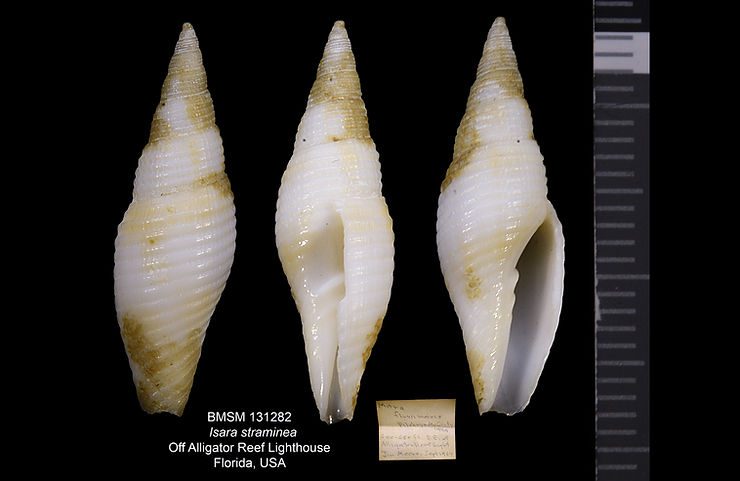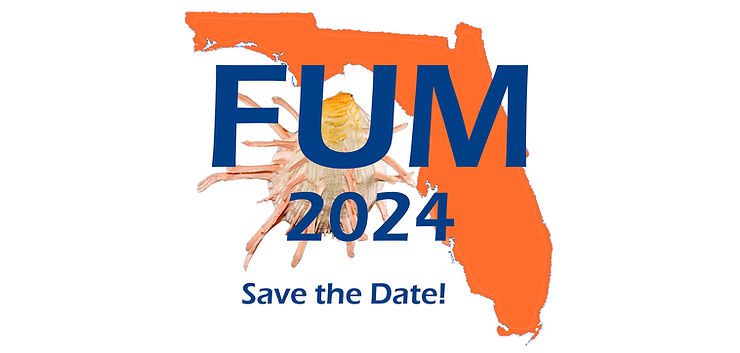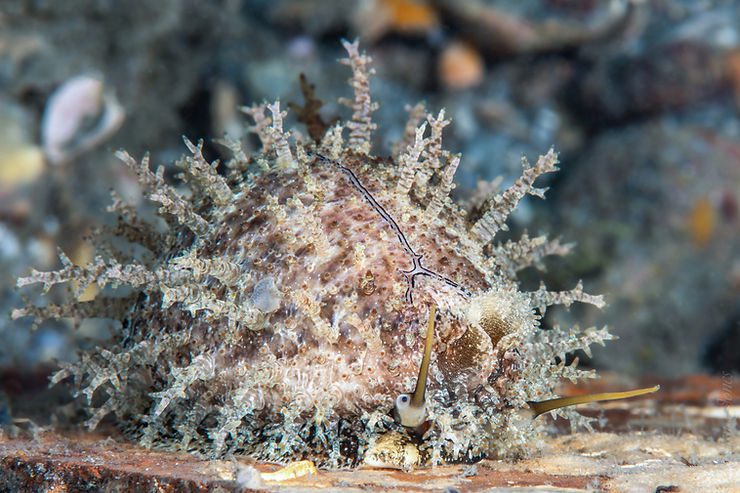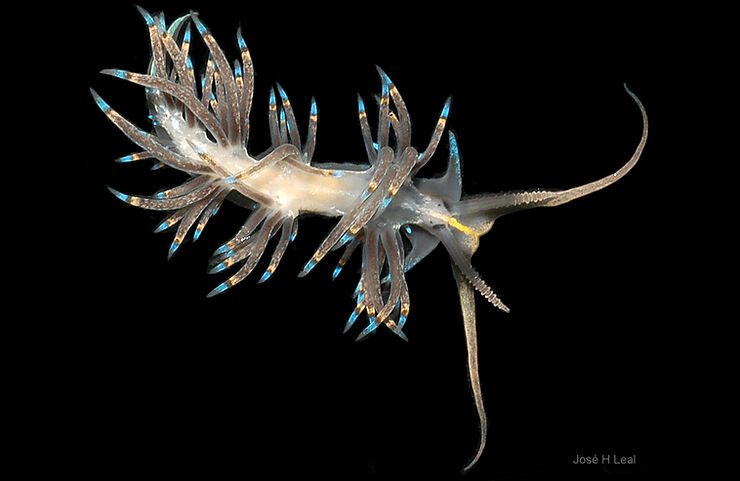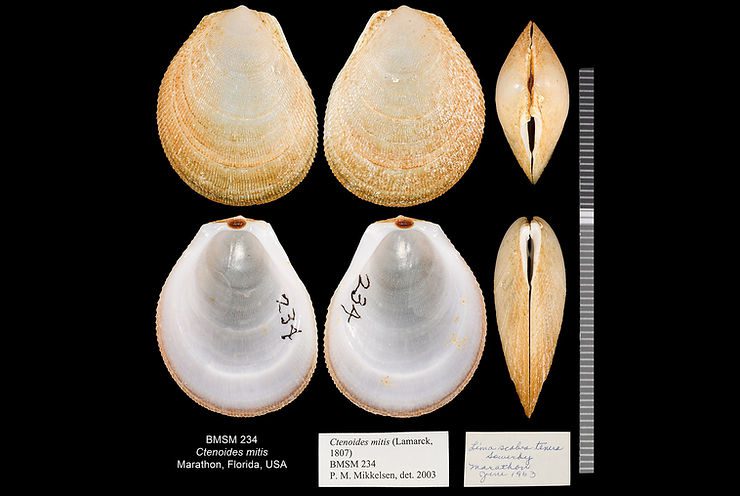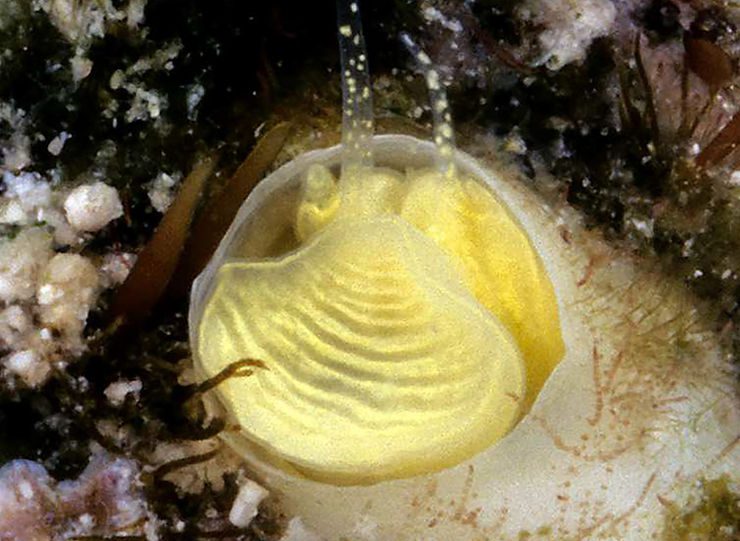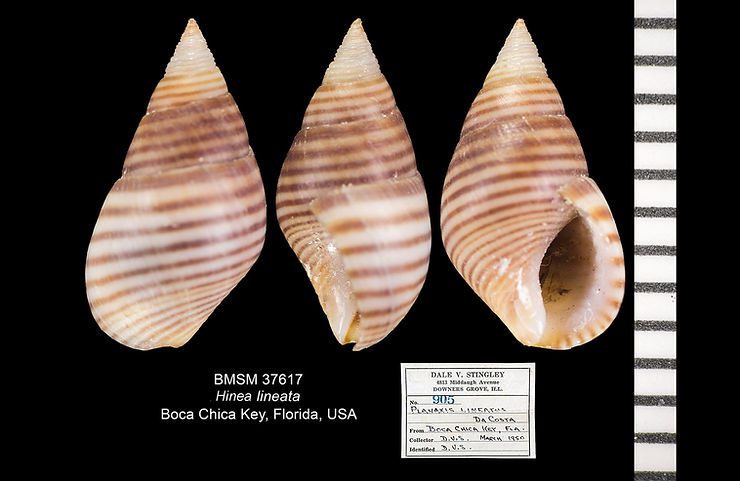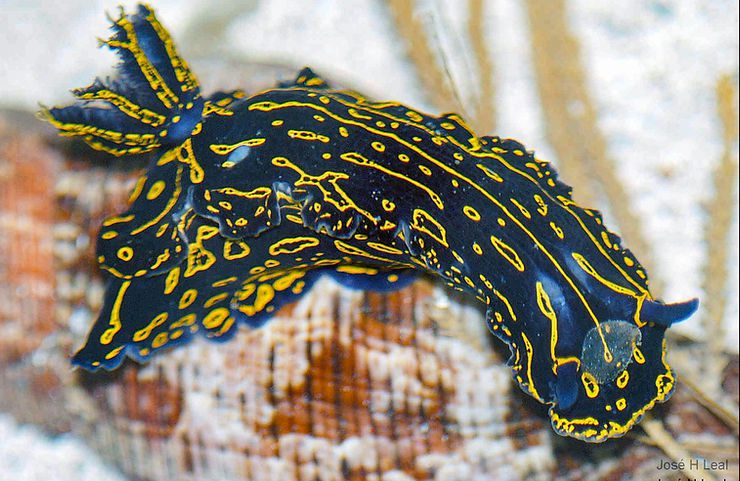
The Florida Regal Doris
Felimare picta is one of the nudibranch sea slugs (shell-less gastropods with external gills) found offshore along Sanibel Island and other parts of Southwest Florida. Reaching 13 cm (about 5.1 inches), it is one of the largest nudibranch species in the western Atlantic Ocean. It is also one of the most attractive, showing an elegant color pattern of yellow lines and elliptical markings against a dark blue, sometimes almost black, background. The gills are visible as a set of feather-like projec
